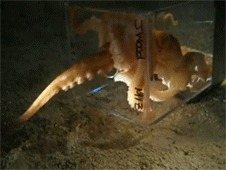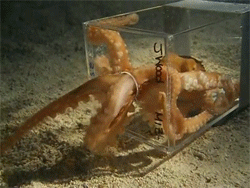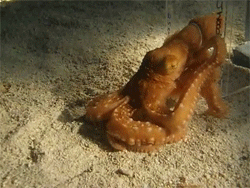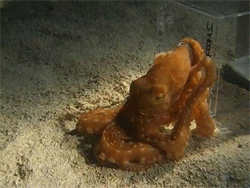Sleep Suppresses Brain Rebalancing

Sleep suppresses brain rebalancing
Why humans and other animals sleep is one of the remaining deep mysteries of physiology. One prominent theory in neuroscience is that sleep is when the brain replays memories “offline” to better encode them (“memory consolidation”). A prominent and competing theory is that sleep is important for re-balancing activity in brain networks that have been perturbed during learning while awake. Such “rebalancing” of brain activity involves homeostatic plasticity mechanisms that were first discovered at Brandeis University, and have been thoroughly studied by a number of Brandeis labs including the Turrigiano lab. Now, a study from the Turrigiano lab just published in the journal Cell shows that these homeostatic mechanisms are indeed gated by sleep and wake, but in the opposite direction from that theorized previously: homeostatic brain rebalancing occurs exclusively when animals are awake, and is suppressed by sleep. These findings raise the intriguing possibility that different forms of brain plasticity – for example those involved in memory consolidation and those involved in homeostatic rebalancing – must be temporally segregated from each other to prevent interference.
The requirement that neurons carefully maintain an average firing rate, much like the thermostat in a house senses and maintains temperature, has long been suggested by computational work. Without homeostatic (“thermostat-like”) control of firing rates, models of neural networks cannot learn and drift into states of epilepsy-like saturation or complete quiescence. Much of the work in discovering and describing candidate mechanisms continues to be conducted at Brandeis. In 2013, the Turrigiano Lab provided the first in vivo evidence for firing rate homeostasis in the mammalian brain: lab members recorded the activity of individual neurons in the visual cortex of freely behaving rat pups for 8h per day across a nine-day period during which vision through one eye was occluded. The activity of neurons initially dropped, but over the next 4 days, firing rates came back to basal levels despite the visual occlusion. In essence, these experiments confirmed what had long been suspected – the activity of neurons in intact brains is indeed homeostatically governed.
Due to the unique opportunity to study a fundamental mechanism of brain plasticity in an unrestrained animal, the lab has been probing the possibility of an intersection between an animal’s behavior and homeostatic plasticity. In order to truly evaluate possible circadian and behavioral influences on neuronal homeostasis, it was necessary to capture the entire 9-day experiment, rather than evaluate snapshots of each day. For this work, the Turrigiano Lab had to find creative computational solutions to recording many terabytes of data necessary to follow the activity of single neurons without interruption for more than 200 hours. Ultimately, these data revealed that the homeostatic regulation of neuronal activity in the cortex is gated by sleep and wake states. In a surprising and unpredicted twist, the homeostatic recovery of activity occurred almost exclusively during periods of activity and was inhibited during sleep. Prior predictions either assumed no role for behavioral state, or that sleeping would account for homeostasis. Finally, the lab established evidence for a causal role for active waking by artificially enhancing natural waking periods during the homeostatic rebound. When animals were kept awake, homeostatic plasticity was further enhanced.
This finding opens doors onto a new field of understanding the behavioral, environmental, and circadian influences on homeostatic plasticity mechanisms in the brain. Some of the key questions that immediately beg to be answered include:
What it is about sleep that precludes the expression of homeostatic plasticity?
How is it possible that mechanisms requiring complex patterns of transcription, translation, trafficking, and modification can be modulated on the short timescales of behavioral state-transitions in rodents?
And finally, how generalizable is this finding? As homeostasis is bidirectional, does a shift in the opposite direction similarly require wake or does the change in sign allow for new rules in expression?
More Posts from Philosophical-amoeba and Others







Fuji-Ya Restaurant, Second to None
In 1968, Reiko Weston opened her new Fuji-Ya restaurant built atop the limestone foundation of a 19th-century flour mill overlooking the Mississippi River and the Stone Arch Bridge. The original Fuji-Ya restaurant operated near 8th St. and LaSalle beginning almost a decade earlier, in 1959, and served fine Japanese food including Charcoal-Broiled Teri-Yaki dinners, seafood dishes, soups, rice plates, and more. Fuji-Ya translates to “second to none” and the new restaurant offered a dining experience like no other in the Twin Cities.
Weston’s restaurant business expanded over the years with Taiga, a Chinese Szechwan restaurant in St. Anthony Main, and The Fuji International in Cedar-Riverside neighborhood, which featured Korean, Chinese, and East Indian food in addition to Japanese food. Her restaurants received numerous awards and Weston herself was named Minnesota Small Business Person of the Year in 1979.
After Reiko Weston passed away in 1988, her daughter Carol stepped in to manage. But in 1990, the City of Minneapolis bought out the historic restaurant in order to make way for the newly designed parkway. About a decade later, Fuji Ya was brought to life again in Uptown in the trendy Lyn-Lake area, where it remains today.
Recently, Fuji-Ya has gained renewed attention as the Park Board makes plans for a $12 million riverfront refresh. Plans include the teardown of the old Fuji-Ya building, expansion of green space, improved pedestrian crossings, and the addition of a new riverfront restaurant. It was announced last week that Sioux Chef owners Sean Sherman and Dana Thompson will open Owamni: An Indigenous Kitchen on the site.
Menu from the original Fuji-Ya restaurant at 814 LaSalle Ave. from the Minneapolis History Collection Menu Collection. Photos from the Star Tribune Photograph Collection at the James K. Hosmer Special Collections, Hennepin County Library.

Aerial view of Dún Eoghanachta stone fort, Inis Mór, Aran Islands, Ireland (Bing maps)
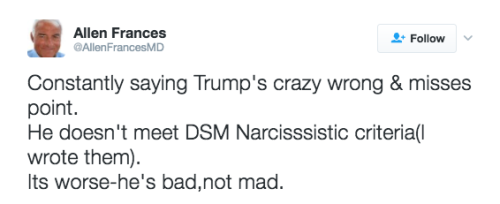




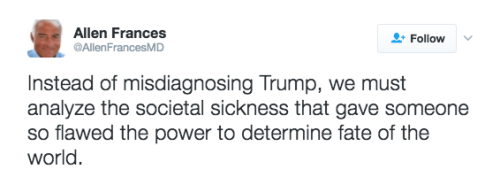
The psychiatrist who wrote the criteria for narcissism just made an extremely important point about what’s wrong with diagnosing Trump with mental disorders
Dr. Allen Frances says in speculating about Trump’s mental health, we are doing a disservice to those who do suffer from mental illness. In a series of tweets, he explained why he doesn’t think Trump is a narcissist — and how harmful it can be for us to keep assuming that he is.

No. 2 Construction Battalion
Fighting for a country that didn’t want them.
On March 25 1917, Canada’s first and only black military unit left Halifax harbor for the Western Front. Six hundred soldiers, mostly from Nova Scotia, formed up as No. 2 Construction Battalion. Many had been trying to enlist since 1914, but winning this privilege had been an up-hill fight: for two years military authorities had turned down black recruits, telling them “This is a white man’s war.”
Finally, in 1916, Canada allowed black recruits entry into a segregated united of laborers. An additional 165 African-Americans crossed the border to join them, creating a full complement of 600 men. Winning the struggle to join up hardly ended discrimination. Except for the reverend, all officers were white, and even when they went to board their transport ship on March 25 the captain initially refused to let them on, saying that he would not let them travel on the same vessel as white soldiers.

The recruits hoped to be allowed to fight when they reached France, but instead the Canadian Expediotnary Force immediately downgraded them from a battalion to a company and assigned them to fell trees and prepare positions for white soldiers. They were not ever even issued with rifles. Their work was tedious and demoralizing, and many considered themselves failures even as they suffered casualties from artillery shells and poison gas.
The unit returned to Canada in 1919, but received no fanfare upon arrival. Much like America’s black soldiers, they returned to a country that did not value them or their sacrifice and actively oppressed their rights. Most of these veterans returned to poverty and unemployment. When they finally had their first reunion in 1982, only nine could attend from twenty known survivors. Their legacy and sacrifice has been revived since then. Although very few men were allowed the chance to serve, they began the first crack in the Canadian military’s institutionalized racism.








The Christopher Robin Story Book from When we were very young, Now we are six, Winnie the Pooh, The House at Pooh Corner by AA Milne Illustrated by Ernest H Shepard London Methuen & Co Ltd. First Edition 1929
Can the brain feel it? The world’s smallest extracellular needle-electrodes
A research team in the Department of Electrical and Electronic Information Engineering and the Electronics-Inspired Interdisciplinary Research Institute (EIIRIS) at Toyohashi University of Technology developed 5-μm-diameter needle-electrodes on 1 mm × 1 mm block modules. This tiny needle may help solve the mysteries of the brain and facilitate the development of a brain-machine interface. The research results were reported in Scientific Reports on Oct 25, 2016.

(Image caption: Extracellular needle-electrode with a diameter of 5 μm mounted on a connector)
The neuron networks in the human brain are extremely complex. Microfabricated silicon needle-electrode devices were expected to be an innovation that would be able to record and analyze the electrical activities of the microscale neuronal circuits in the brain.
However, smaller needle technologies (e.g., needle diameter < 10 μm) are necessary to reduce damage to brain tissue. In addition to the needle geometry, the device substrate should be minimized not only to reduce the total amount of damage to tissue but also to enhance the accessibility of the electrode in the brain. Thus, these electrode technologies will realize new experimental neurophysiological concepts.
A research team in the Department of Electrical and Electronic Information Engineering and the EIIRIS at Toyohashi University of Technology developed 5- μm-diameter needle-electrodes on 1 mm × 1 mm block modules.
The individual microneedles are fabricated on the block modules, which are small enough to use in the narrow spaces present in brain tissue; as demonstrated in the recording using mouse cerebrum cortices. In addition, the block module remarkably improves the design variability in the packaging, offering numerous in vivo recording applications.
“We demonstrated the high design variability in the packaging of our electrode device, and in vivo neuronal recordings were performed by simply placing the device on a mouse’s brain. We were very surprised that high quality signals of a single unit were stably recorded over a long period using the 5-μm-diameter needle,” explained the first author, Assistant Professor Hirohito Sawahata, and co-author, researcher Shota Yamagiwa.
The leader of the research team, Associate Professor Takeshi Kawano said: “Our silicon needle technology offers low invasive neuronal recordings and provides novel methodologies for electrophysiology; therefore, it has the potential to enhance experimental neuroscience.” He added, “We expect the development of applications to solve the mysteries of the brain and the development of brain–machine interfaces.”

E H Shepard illustration from Now we are six by A A Milne

Well this was something I didn’t know about! So the gist is that Polari was a secret language for gay men (much like thieves cant) in the UK used before the decriminalization of homosexuality in 1967.
What Polari shows and is an example of, is that everyday people USE language for particular purposes that shape our identity. Interestingly, much like other words or varieties of languages that are considered negative, sexist or racist by society, using Polari was seen by some homosexuals as a form of oppression and acknowledgment of being somehow fundamentally different from non-homosexuals.
-
 mysticalpruneflapshepherd liked this · 6 years ago
mysticalpruneflapshepherd liked this · 6 years ago -
 richiefurr liked this · 6 years ago
richiefurr liked this · 6 years ago -
 canadian-pancake liked this · 6 years ago
canadian-pancake liked this · 6 years ago -
 bloodyaliens reblogged this · 6 years ago
bloodyaliens reblogged this · 6 years ago -
 woahdudecoolboat liked this · 6 years ago
woahdudecoolboat liked this · 6 years ago -
 moon-medicine liked this · 8 years ago
moon-medicine liked this · 8 years ago -
 vowiekins liked this · 8 years ago
vowiekins liked this · 8 years ago -
 sosoulshark liked this · 8 years ago
sosoulshark liked this · 8 years ago -
 anactualamphibian reblogged this · 8 years ago
anactualamphibian reblogged this · 8 years ago -
 helpingpetsbehave reblogged this · 8 years ago
helpingpetsbehave reblogged this · 8 years ago -
 topsydead liked this · 9 years ago
topsydead liked this · 9 years ago -
 warisdreams liked this · 9 years ago
warisdreams liked this · 9 years ago -
 snozzberrycorner-blog liked this · 9 years ago
snozzberrycorner-blog liked this · 9 years ago -
 jkorbj liked this · 9 years ago
jkorbj liked this · 9 years ago -
 chaicopaci liked this · 9 years ago
chaicopaci liked this · 9 years ago -
 dalihrob liked this · 9 years ago
dalihrob liked this · 9 years ago -
 m3lyburggonz reblogged this · 9 years ago
m3lyburggonz reblogged this · 9 years ago -
 beeftrapese liked this · 9 years ago
beeftrapese liked this · 9 years ago -
 skysurfer-world liked this · 9 years ago
skysurfer-world liked this · 9 years ago -
 kiyabi82 reblogged this · 9 years ago
kiyabi82 reblogged this · 9 years ago -
 kiyabi82 liked this · 9 years ago
kiyabi82 liked this · 9 years ago -
 truva7 reblogged this · 9 years ago
truva7 reblogged this · 9 years ago -
 atinyscientist liked this · 9 years ago
atinyscientist liked this · 9 years ago -
 keepmusicflowing liked this · 9 years ago
keepmusicflowing liked this · 9 years ago -
 oneapplepiefromscratchplease reblogged this · 9 years ago
oneapplepiefromscratchplease reblogged this · 9 years ago -
 oneapplepiefromscratchplease liked this · 9 years ago
oneapplepiefromscratchplease liked this · 9 years ago -
 krupskaya liked this · 9 years ago
krupskaya liked this · 9 years ago -
 wishingonawell reblogged this · 9 years ago
wishingonawell reblogged this · 9 years ago -
 bananabananaz420-blog liked this · 9 years ago
bananabananaz420-blog liked this · 9 years ago -
 tract3-blog reblogged this · 9 years ago
tract3-blog reblogged this · 9 years ago -
 knorman7-blog liked this · 9 years ago
knorman7-blog liked this · 9 years ago -
 collector-of-stuff reblogged this · 9 years ago
collector-of-stuff reblogged this · 9 years ago -
 collector-of-stuff liked this · 9 years ago
collector-of-stuff liked this · 9 years ago -
 artfullover-blog liked this · 9 years ago
artfullover-blog liked this · 9 years ago -
 morevelveteenrabbits-blog liked this · 9 years ago
morevelveteenrabbits-blog liked this · 9 years ago -
 deeptihigh-blog liked this · 9 years ago
deeptihigh-blog liked this · 9 years ago -
 bambiplanet liked this · 9 years ago
bambiplanet liked this · 9 years ago -
 subivo-blog liked this · 9 years ago
subivo-blog liked this · 9 years ago -
 seedofcompassion liked this · 9 years ago
seedofcompassion liked this · 9 years ago -
 theench4ntedw0rldposts-blog reblogged this · 9 years ago
theench4ntedw0rldposts-blog reblogged this · 9 years ago
A reblog of nerdy and quirky stuff that pique my interest.
291 posts







